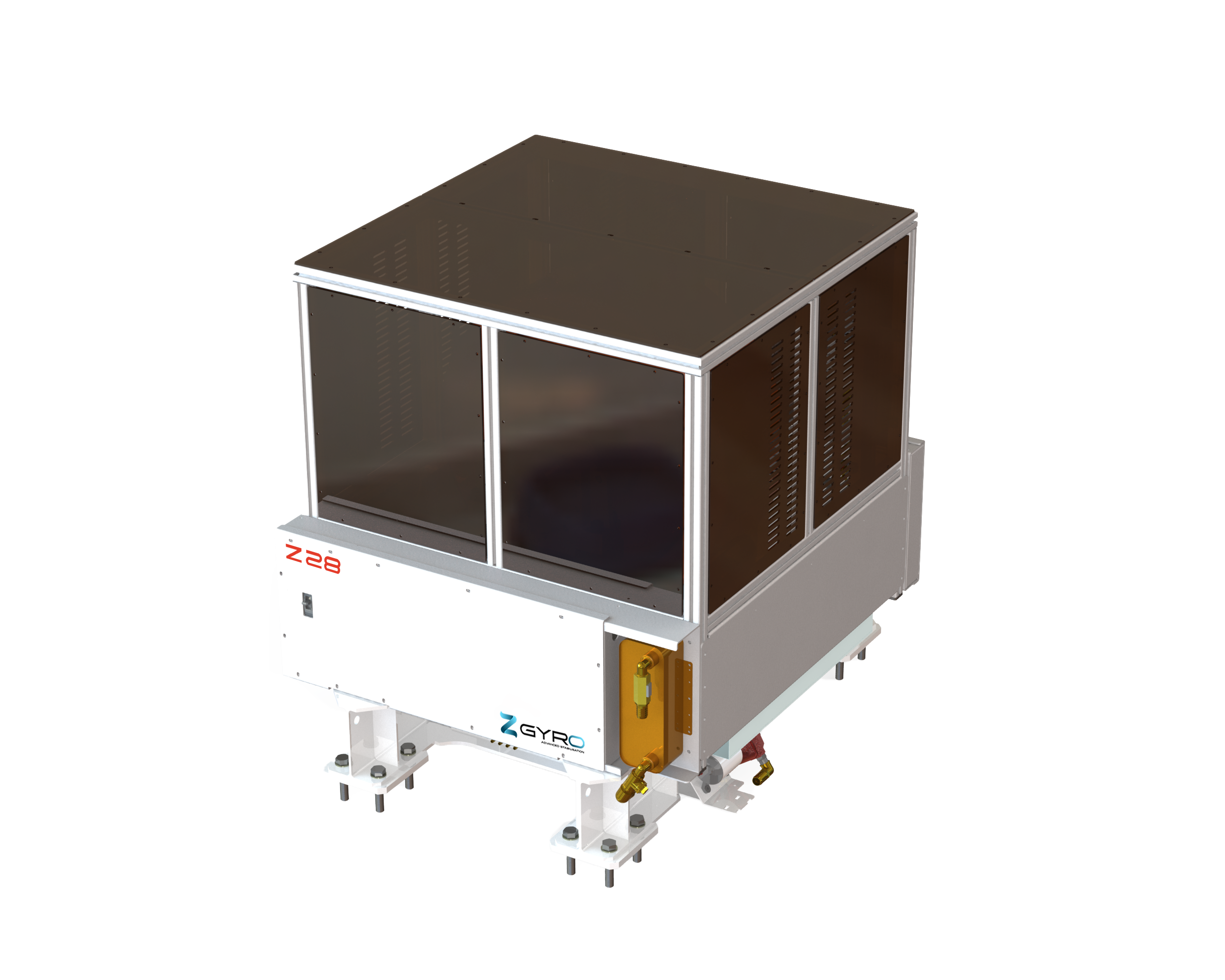The Importance of Gyro Stabilizers for Smooth Sailing on Cruise Ships
The Importance of Gyro Stabilizers for Smooth Sailing on Cruise Ships
Table of Contents
- Introduction to Gyro Stabilizers
- What Are Gyro Stabilizers?
- How Do Gyro Stabilizers Work?
- Benefits of Gyro Stabilizers on Cruise Ships
- Challenges of Implementing Gyro Stabilizers
- The Future of Gyro Stabilization Technology
- Case Studies: Successful Implementation
- Conclusion
- FAQs About Gyro Stabilizers
Introduction to Gyro Stabilizers
In the world of maritime travel, ensuring a smooth and comfortable journey is paramount. Cruise ships, with their lavish amenities and entertainment options, are designed to provide passengers with an unforgettable experience. However, the natural movement of the ocean can lead to unwanted rolling and pitching, making the journey less enjoyable. This is where **gyro stabilizers** come into play. By leveraging cutting-edge technology, these devices dramatically enhance stability aboard cruise ships, allowing for a serene sailing experience.
What Are Gyro Stabilizers?
Gyro stabilizers are advanced mechanical devices that utilize the principles of gyroscopic motion to maintain a ship's orientation and reduce unwanted movements caused by waves and winds. These devices consist of spinning rotors that create angular momentum. As the ship experiences rolling or pitching, the gyros counteract these forces, effectively stabilizing the vessel.
There are two primary types of gyro stabilizers used in maritime applications: **active gyro stabilizers** and **passive gyro stabilizers**. While both types aim to enhance stability, they operate on different principles and with varying degrees of effectiveness.
Active Gyro Stabilizers
Active gyro stabilizers are equipped with advanced control systems that allow them to adjust their angular momentum in real-time. This adaptability enables them to counteract immediate movements, providing a highly responsive stabilization effect.
Passive Gyro Stabilizers
Passive gyro stabilizers, on the other hand, rely solely on the principles of gyroscopic motion without active adjustments. While they can still provide significant stabilization, their effectiveness can be limited compared to active systems.
How Do Gyro Stabilizers Work?
Understanding how gyro stabilizers function requires a basic grasp of gyroscopic principles. When a rotor spins, it generates a force known as gyroscopic inertia. This force resists changes in the rotor's orientation. When a ship rolls or pitches, the stabilizer’s gyros respond by generating a counteracting force, effectively reducing the amplitude of the ship's movement.
For illustrative purposes, let’s consider a practical example. If a cruise ship begins to roll due to a wave, the gyro stabilizer will detect this inclination and adjust its rotor orientation to exert a counteracting force. This dynamic adjustment reduces the rolling motion and creates a more stable platform for passengers.
Benefits of Gyro Stabilizers on Cruise Ships
The implementation of gyro stabilizers on cruise ships offers an array of advantages that enhance the overall sailing experience.
Enhanced Comfort for Passengers
One of the most notable benefits of gyro stabilizers is the **enhanced comfort** they provide. By minimizing the effects of rolling and pitching, passengers can enjoy their time aboard without the discomfort often associated with sea travel. This increased stability allows for a smoother dining experience, less motion sickness, and more enjoyable entertainment options, ultimately leading to higher satisfaction rates among travelers.
Safety Enhancements for Vessels
Safety is paramount in maritime travel. Gyro stabilizers contribute to vessel safety by maintaining a steady course and preventing excessive rolling that could lead to accidents or injuries. By ensuring a stable environment, they also reduce the risk of cargo shifting and equipment damage, which can occur during rough seas.
Increased Fuel Efficiency
Another compelling advantage of gyro stabilizers is their role in improving fuel efficiency. When a ship maintains a consistent orientation, it can navigate the waters more effectively, reducing drag and fuel consumption. As a result, cruise lines can cut operational costs while simultaneously minimizing their environmental impact.
Challenges of Implementing Gyro Stabilizers
While the benefits of gyro stabilizers are considerable, implementing this technology is not without its challenges. The initial cost of purchasing and installing gyro stabilization systems can be high. Additionally, the complexity of integrating these systems with existing vessel infrastructure may pose further obstacles.
Maintenance Considerations
Regular maintenance of gyro stabilizers is crucial for optimal performance. Operators must ensure that these systems are regularly serviced to prevent malfunctions and to maintain their stabilizing effectiveness.
The Future of Gyro Stabilization Technology
The future of gyro stabilization technology appears promising, with ongoing advancements in design and engineering. Emerging technologies, such as artificial intelligence and machine learning, are expected to enhance the responsiveness and functionality of gyro stabilizers.
As cruise lines continue to prioritize passenger comfort and safety, the demand for advanced stabilization solutions will likely grow. Innovations in materials and design will further lower costs and enhance the effectiveness of these systems.
Case Studies: Successful Implementation
To understand the impact of gyro stabilizers on cruise ships better, let us explore a few noteworthy examples of successful implementation.
Case Study 1: The Serenity Cruise Line
The Serenity Cruise Line recently integrated active gyro stabilizers into their fleet. Feedback from passengers indicated a dramatic reduction in motion sickness and an overall improvement in the cruising experience. The cruise line reported increased customer satisfaction ratings, leading to higher repeat bookings.
Case Study 2: Oceanic Adventures
Oceanic Adventures made headlines after retrofitting their ships with passive gyro stabilizers. Although the technology was less advanced, it yielded significant improvements in stability during voyages. The company noted an impressive decrease in guest complaints related to motion discomfort.
Conclusion
In summary, gyro stabilizers play a crucial role in ensuring **smooth sailing** on cruise ships. With their ability to minimize the effects of rolling and pitching, these devices enhance passenger comfort, bolster safety, and improve fuel efficiency. Despite the challenges associated with their implementation, the future of gyro stabilization technology continues to look bright, promising even greater advancements that will further elevate the cruise experience.
FAQs About Gyro Stabilizers
1. What is the primary function of a gyro stabilizer on a cruise ship?
The primary function of a gyro stabilizer is to reduce vessel rolling and pitching caused by waves and wind, ensuring a calmer and more comfortable experience for passengers.
2. Are gyro stabilizers effective in all sea conditions?
While gyro stabilizers significantly reduce motion, their effectiveness can vary depending on the severity of sea conditions. They are most effective in moderate seas and may offer less impact in extreme weather.
3. How often do gyro stabilizers require maintenance?
Gyro stabilizers should be inspected and serviced regularly, typically every six months, to ensure optimal performance and detect potential issues early.
4. Do all cruise ships use gyro stabilizers?
Not all cruise ships are equipped with gyro stabilizers. However, their adoption is becoming increasingly common as cruise lines prioritize passenger comfort and safety.
5. Can gyro stabilizers improve fuel efficiency?
Yes, by maintaining a stable orientation, gyro stabilizers help reduce drag and enhance fuel efficiency, leading to lower operational costs and a reduced environmental impact.
cruise ship gyro stabilizer
Related News







